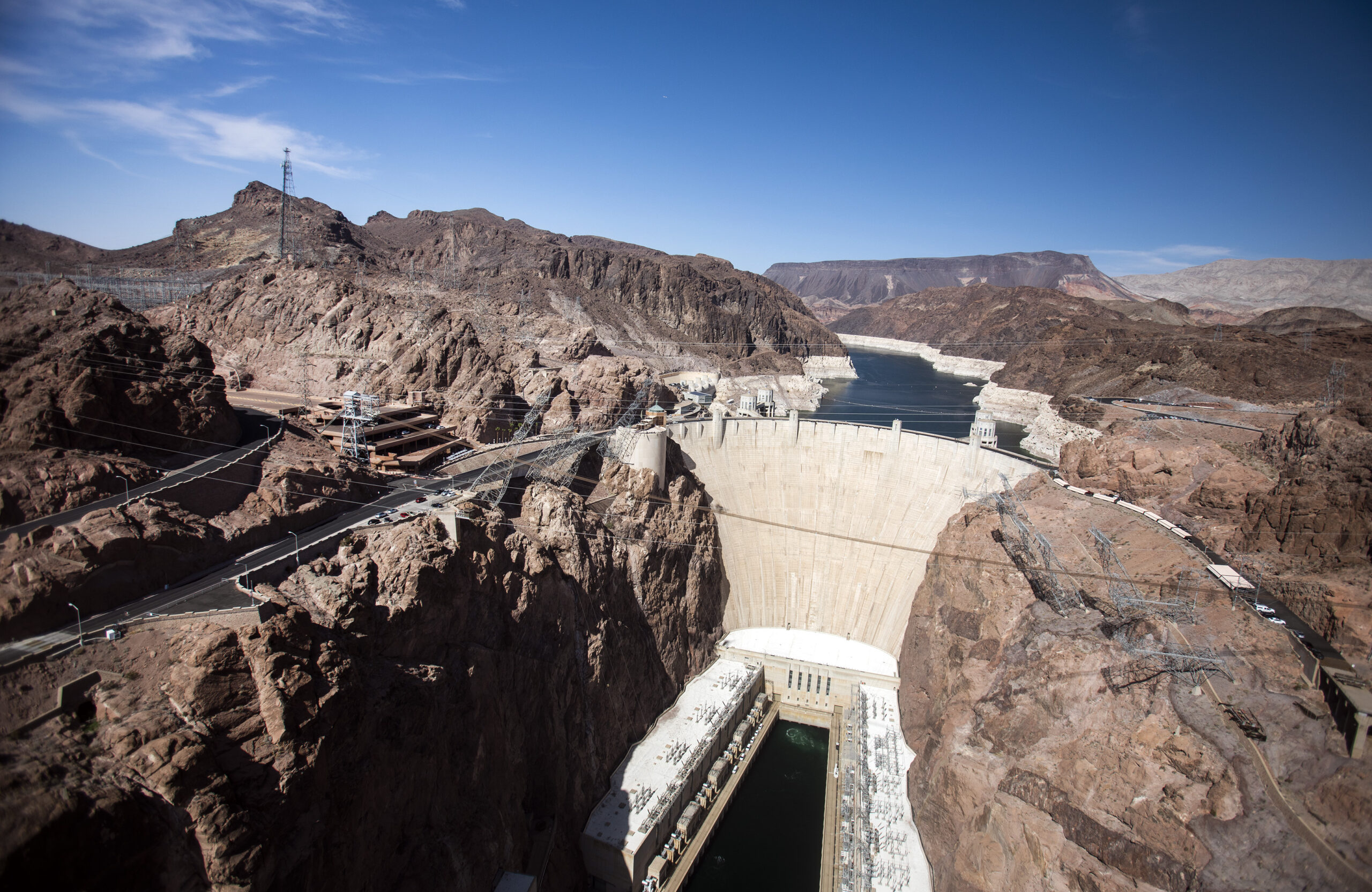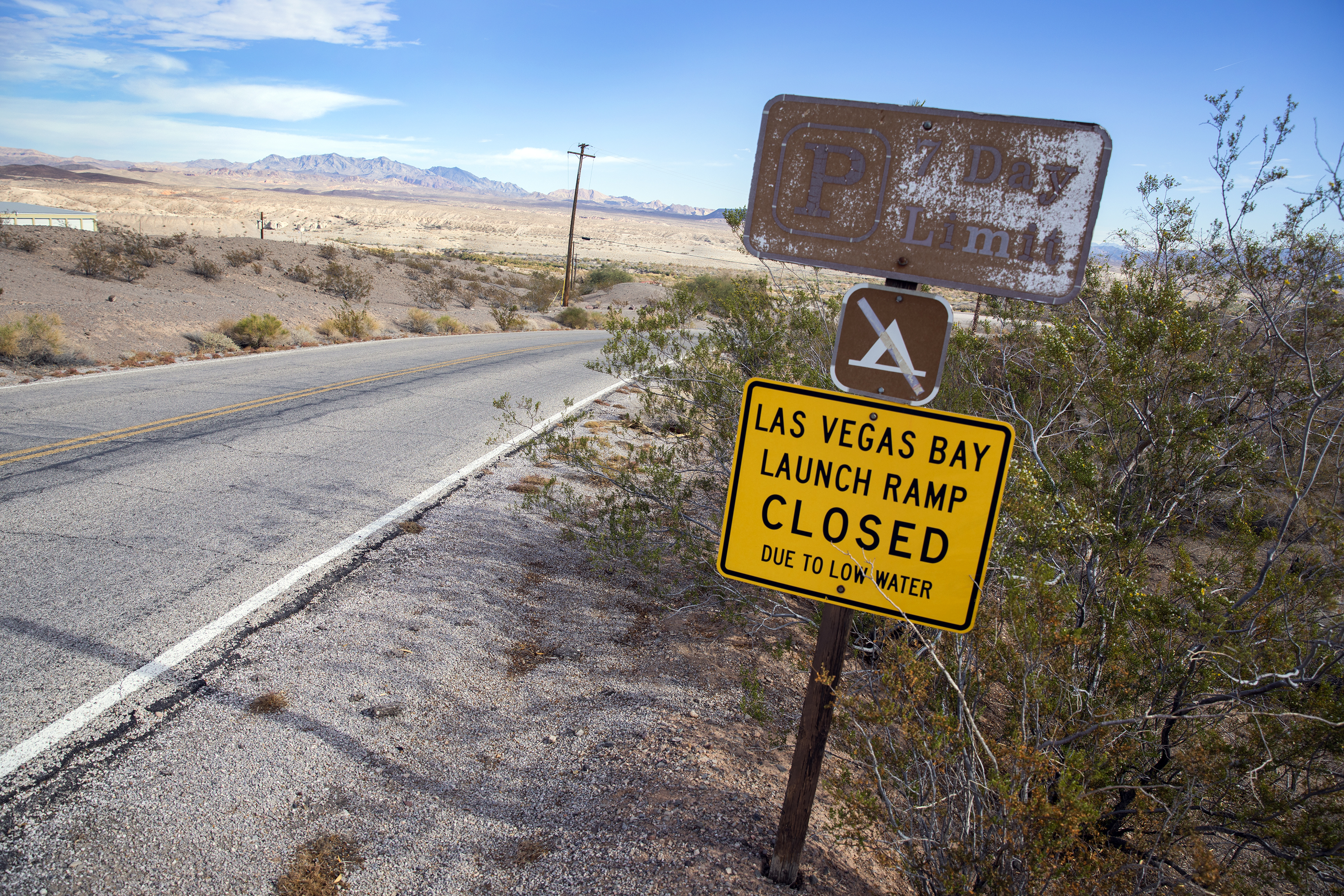Nevada, Colorado River states sign letter agreeing to Drought Contingency Plan, despite opposition from river's largest user

After years of talks and disputes, the seven states in the Colorado River Basin came together on Tuesday to back a Drought Contingency Plan (DCP) to use less water during shortages. Negotiators for the seven states sent the plan to Congress, which would have to enact legislation to implement the plan, and met a key deadline imposed by federal water managers.
Las Vegas could face up to a 10 percent cut in its water right if Lake Mead falls below a shortage elevation, a reduction water managers said they are prepared for.
Facing a nearly two-decade drought, the states started negotiating the plan five years ago as a roadmap for taking further cuts to their allocations of Colorado River water when Lake Mead falls to critical levels. Lake Mead, the nation’s largest manmade reservoir, stores water for Arizona, California and Nevada. In recent years the reservoir has became a symbol of drought, with a chalk-colored “bathtub ring” showing how much the water line has dropped.
In August, the Bureau of Reclamation, the federal agency charged with managing the river’s complex system of reservoirs, had projected a shortage at Lake Mead starting next year.
To prepare for it, Reclamation Commissioner Brenda Burman said the states had to complete a drought plan by the end of 2019. Multiple deadlines came and passed. But the states were finally able to agree on specifics of the plan Tuesday, the most recent deadline.
During a press conference, Burman said she commended the "basin states and key water contractors" on reaching an "important milestone,” arguing the plan will lessen the risks that the water users face.
Under a 1922 compact that divided up the Colorado River, Nevada received the smallest share since, at the time, no one imaged Las Vegas would grow to the size it is today. Las Vegas gets almost all of its water from the river. But because of conservation and water recycling, Las Vegas and the cities around it use only about 80 percent of their entitlement. As a result, the water authority has said it is prepared for an up to 10 percent cut required by the shortage plan.

On Tuesday, negotiators met in Phoenix to sign and send a letter to Congress with copies of the plan. But despite the announcement, the plan is not yet done and has received sharp criticism from the river’s largest water user. Certain provisions in the plan require congressional approval. Those provisions are needed to clarify the priority for water in Arizona and California.
If approved by Congress, the states will sign final documents.
The Imperial Irrigation District, an agricultural powerhouse nestled in the corner of Southern California, is a vocal opponent of the plan. Arizona Republic reporter Ian James reported that on Tuesday, the district’s board president gave a press conference slamming the plan because it failed to secure federal funding for the Salton Sea, where an environmental crisis is unfolding.
“As champagne is being prepared for debauched self-congratulation in Phoenix, remember this: The IID is the elephant in the room on the Colorado River as we move forward. And like the elephant, our memory and rage is long,” said Jim Hanks, who leads the district’s elected board.
In a statement, the Southern Nevada Water Authority, called Imperial’s decision “shortsighted, manipulative and simply not supported by any reasonable view of the facts.”
As always, the congressional process could spark debate on other issues. Last week, the trade publication E&E News reported that there was some concern that some proposed legislation could override laws that require federal agencies to conduct environmental reviews.
Congress is expected to begin discussing the plan in a Senate hearing on March 27. Sen. Catherine Cortez Masto is the ranking member of the subcommittee that will review the plan.
“I look forward to discussing the drought contingency plan at the Senate Energy and Natural Resources subcommittee hearing next week and will continue to collaborate with my western state colleagues to solidify a plan that protects Lake Mead, the Colorado River and the water resources of those who live in Nevada and across the west,” Cortez Masto said in a statement.
John Entsminger, the general manager of the Southern Nevada Water Authority, is scheduled to testify at the hearing. On Tuesday, he called agreement on the drought plan a “historic” day. He said negotiators have briefed their delegations and see a nonpartisan path through Congress.
Had the negotiators not agreed to the plan by Tuesday, the governors of each state would have been required to submit written comments to Reclamation advising the agency on how to move forward with its own federal drought plan. Earlier this year, Reclamation initiated a process, through a Federal Register notice, asking for comments. That process was terminated today.
For decades, the federal government has deferred to the states to determine how the river should be managed. But with the prolonged drought and a shortage looming, Reclamation had threatened to take away some of that autonomy. The threat motivated the states to complete the plan, which would avoid the uncertainty, untested legal arguments and potentially a new layer of politics that would likely come with the federal government imposing its own rules.
With above-average precipitation across the West this winter, it is less likely that Reclamation will declare a shortage for the snowpack-fed Colorado River starting in 2020. But officials with the agency reminded water users that one good year was not enough to solve the basins’ problems. The Colorado River faces overuse, a problem worsening with climate change.
“These developments may lessen the chance of shortage in 2020,” Terry Fulp, a regional director in Reclamation’s Colorado River division, said in a statement on Friday. “However, one near or even above-average year will not end the ongoing extended drought experienced in the Colorado River Basin and does not substantially reduce the risks facing the basin.”
During the call, Fulp said that more action will be needed to reduce the hydrologic risks.
“The future is very uncertain,” he said. “Longer term, we have a lot of work to do.”

In keeping with the negotiations, which revealed disputes between the states and their water users, the final plan’s objections from the river’s largest single user, the Imperial Irrigation District, cast a cloud over an otherwise celebratory moment.
The district had wanted federal funding to mitigate a public health crisis unfolding at the Salton Sea, a manmade lake fed by runoff from agriculture. As the district has cut down on irrigation to send water to cities like San Diego, the lake has shrunk, exposing hazardous particles to the air in one of the state’s poorest communities, The Desert Sun reported in a five-part series in 2017.
John Fleck, the director of the University of New Mexico’s Water Resources Program, said he had mixed feelings about the approval of the drought plan. He said the plan is necessary. At the same time, he said it was concerning the river’s largest water user was left out.
“There is the moral problem of poor people whose health is being impacted by these decisions being left out of the decision-making process,” he said. “And there is the practical problem of the largest water users with senior water rights being left out of the process.”
“That could really bite us in the long-run,” he added.
The district had planned to cut its use under the drought plan, with the condition that it received a commitment for $200 million in Farm Bill funding to restore the Salton Sea. The Metropolitan Water District, a powerful wholesale water provider for Southern California cities, said that it would cover the district’s cuts to allow the drought plan to move forward by March 19.
It is possible that funding could still come in the future through U.S. Department of Agriculture programs that are still being developed. However, those programs will likely be competitive.
During the call, Entsminger noted that the states had written a letter one week ago, emphasizing the importance of finding a solution to the Salton Sea crisis. But he also said that the plan would not worsen the problem and needed to move forward. Once implemented, the states can begin leaving more water in critical reservoirs, Lake Mead and Lake Powell, to prevent shortages on a binational river system that supports agriculture and about 40 million people in the Southwest.
The Southern Nevada Water Authority released a statement after the call, saying that the the drought plan was of “critical importance” and that the district’s claims were unfounded.
“The Imperial Irrigation District’s refusal to approve the plans supported by every one of its counterparts in the Upper and Lower Colorado River Basin is shortsighted, manipulative and simply not supported by any reasonable view of the facts,” the water authority said, adding that the plan complies with environmental laws. “The DCPs have no effect on the Salton Sea, a fact acknowledged by [the district’s] own Board of Directors during a September 2018 meeting.”

In an earlier statement, a Reclamation spokesperson applauded California for finding a way to come to an agreement by March 19. The statement said that the Imperial Irrigation District could have approved the plan “as they continue to work with all the relevant local, state, tribal and federal agencies involved in Salton Sea management efforts,” or sign on later.
But rhetoric out of the district is making that look unlikely.
The disagreement in California comes after months of infighting between water users in Arizona, the state would require to take the sharpest cuts under the drought plan. Many of Arizona’s issues have been resolved, although the state is still finalizing some agreements.
Peter Nelson, chairman of the Colorado River Board of California, said Tuesday at the press conference that he was disappointed California could not move forward in complete consensus. But he said that the drought plan would not make the impacts to the Salton Sea worse.
“It is my feeling we would have been better served with the Imperial Irrigation District participating with the state of California, but that was unable to happen," Nelson said.
Updated on March 19 at 5:17 p.m.: This story was updated to paraphrase a quote from Bureau of Reclamation Commissioner Brenda Burman.
